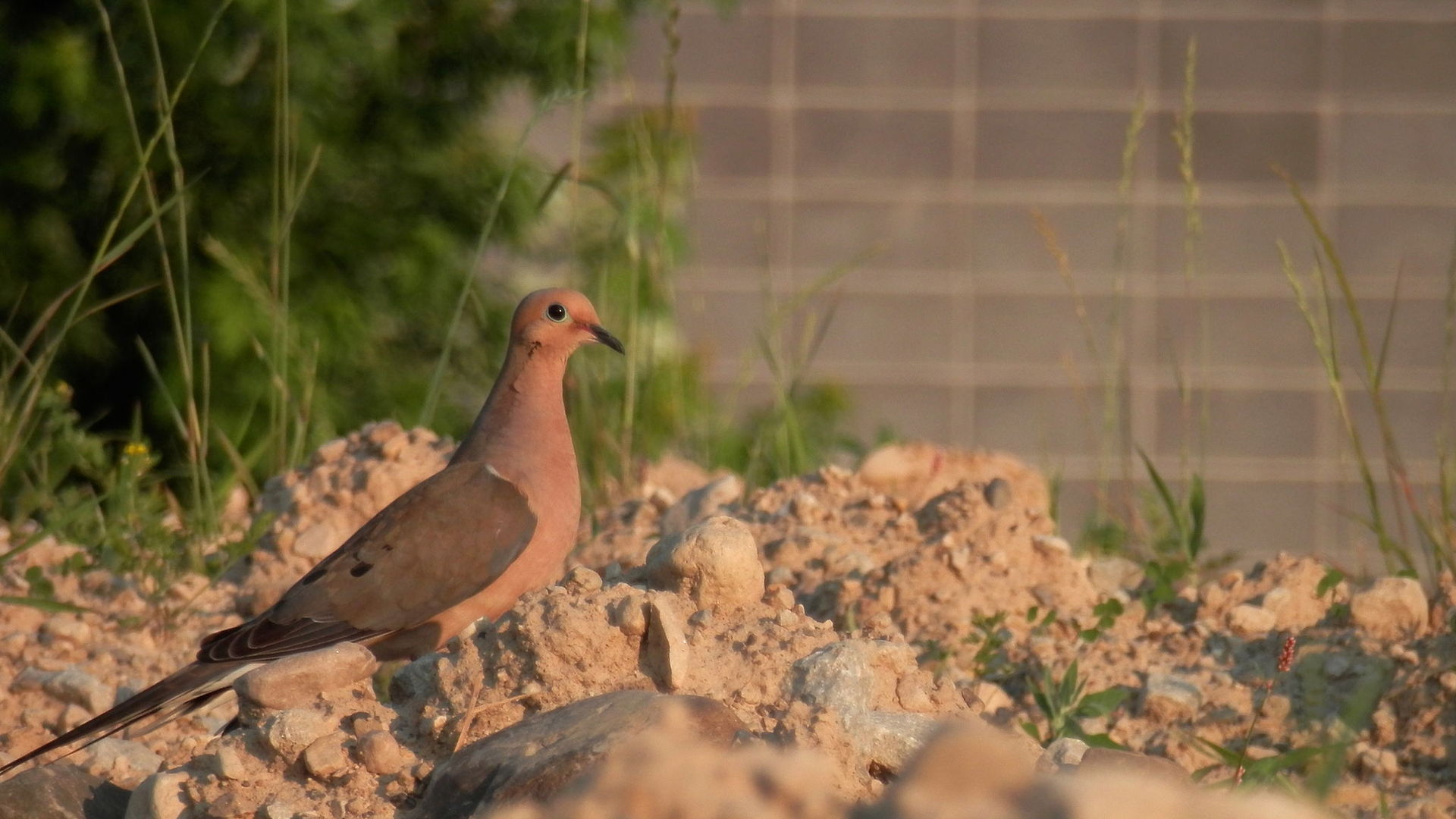
Simply check your backyard and you may see one of these mourning doves hanging around. With more than 45 million hunted every year, they are one of the most commonly hunted game birds in the world. Furthermore, the mourning dove is the national bird of the British Virgin Islands. Don’t miss these mourning dove facts you should know about your friendly bird friends.
- Mark Catesby first described and illustrated the mourning dove in 1731.
- He also gave them their original scientific name, Turtur carolinensis.
- George Edwards also named them long-tailed doves in 1743.
- He also gave them a new scientific name, Columba macroura.
- Carl Linneaus included the doves in the 10th Edition of Systema Naturae in 1758.
- He also replaced their scientific name again, this time as Columba cariolensis.
- In 1838, Charles Bonaparte placed the doves in the genus Zenaida.
- The doves’ closest relatives in the passenger pigeon went extinct in the early 1900s.
- Francis Hemming proposed the modern scientific name in 1952, that of Zenaida macroura.
- International organizations adopted the proposal in 1955.
- With the passenger pigeon extinct, the mourning doves’ closest relatives today include the eared dove and the Socorro dove.
- Scientists estimate that over 400 million specimens live in the world today.
- International organizations consider the species conservation status as of least concern.
- Michigan uses the bird as its state bird for peace.
- Native Americans frequently include the bird in their literary works.
The mourning dove has several other names.
There’s the American mourning dove, as well as the rain dove. Colloquially, they’re also known as the turtle dove, though, they aren’t actually turtle doves. Once, they also had the names of Carolina pigeon and Carolina turtledove.
Rain doves have a distinctive appearance.
First, they have round heads, with broad and elliptical wings. They also have long and tapered tails, from which their scientific name comes. Specifically, macroura, derived from the Greek words for large and tail. The rain dove’s feet have a typical arrangement for perching, with three toes forward and one reversed. They also have short legs, usually with red coloring. Finally, they have short beaks with a dark color ranging from brown to black.

Their feathers may also change color depending on the environment.
This actually surprised scientists, as they hadn’t thought it was possible for feathers to change color as quickly as mourning doves do. Studies from 2010, however, show that their feathers adjust their arrangement at the microscopic level, in response to changes in the moisture of the air. This allows the dove’s body to adjust the brightness of its feathers as needed.
They also have unique calls of their own.
Strangely enough, their mating calls have a similarity to those that owls use. Scientists differentiate them using a grating sound that doves make before making a call. Other calls that doves use include one that signals a mate to a possible nesting site, as well as a call warning them of danger nearby. The wings of a mourning dove also make a unique whistling sound while flying that humans have difficulty hearing.
The mourning dove and its various breeds live all over the Americas.
First, the West Indian subspecies lives in the Caribbean Sea, primarily in the Greater Antilles, and also in the Florida Keys. The eastern subspecies also lives in the Caribbean, primarily in Bermuda and the Bahamas, while also ranging north along the east of North America. The western subspecies lives in the west of North America, and ranging down south to Mexico, where they coexist with the Panamanian subspecies of Central America. And finally, we have the Clarion subspecies, unique to Clarion Island off of Mexico’s Pacific coast.

They also have preferences when it comes to habitat.
For one thing, the doves tend to avoid swamps and thick forests, preferring open or semi-open areas. Those include prairies and grasslands, as well as lightly-forested woodland areas. The doves have also long since become comfortable in the presence of humans, so they also live in farmland or even in suburban areas.
Rain doves tend to mate for life.
Once mated, the male looks for possible nesting spots, with the female making the final decision. The male then gathers building materials for the nest, which the female puts together. After mating, the female lays two eggs, which take about two weeks before hatching. However, doves mate several times in a single season, producing up to 12 eggs on average. The hatchlings themselves take just over a month to reach adulthood. Scientists have since discovered that such rapid breeding resulted from high mortality rates in the wild, with an estimated 70% of hatchlings dying before adulthood.
Mourning doves usually feed on seeds.
Seeds actually make up 99% of their diet, preferably pine nuts, as well as corn, sesame, and wheat seeds among others. Rarely, though, the doves will eat insects and even snails to supplement their diet. They also swallow sand or even small stones, which stay in their stomachs, and grinding any food the birds eat, helps with their digestion.
Several predators prey on the rain dove.
Raptors like eagles and hawks make up the mourning dove’s most common predators. Corvids like crows and ravens also prey on hatchlings, as do cats and snakes.

They also suffer from certain parasites and diseases.
The most common parasites include lice, mites, nematodes, and even tapeworms. They also especially suffer from Trichomonas gallinae, which lives in the bird’s mouth. Over time, the parasite will cause tumors in the bird’s mouth and throat, making it impossible for the bird to eat. This eventually causes them to just starve to death. Mourning doves also suffer from avian poxes, usually caught from eating contaminated insects.
Was this page helpful?
Our commitment to delivering trustworthy and engaging content is at the heart of what we do. Each fact on our site is contributed by real users like you, bringing a wealth of diverse insights and information. To ensure the highest standards of accuracy and reliability, our dedicated editors meticulously review each submission. This process guarantees that the facts we share are not only fascinating but also credible. Trust in our commitment to quality and authenticity as you explore and learn with us.


